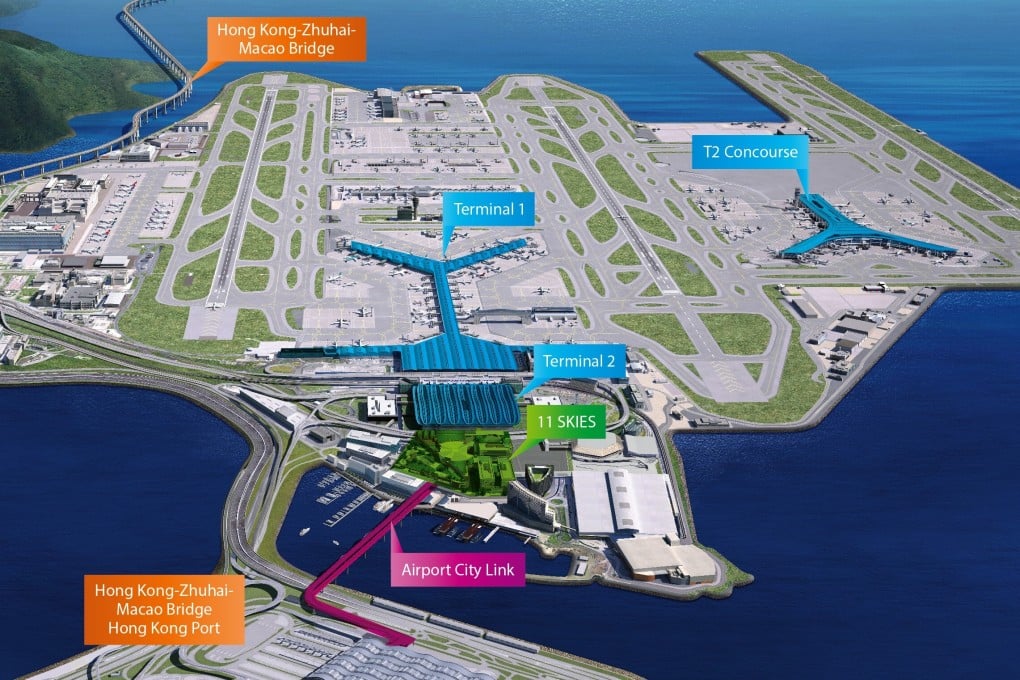Hong Kong’s Airport City: redefining an aviation hub as a destination of its own
- The 10-year development project will enhance operations at Hong Kong International Airport, cementing its role as a leading passenger and cargo hub
- It also includes plans to introduce 11 Skies, a mixed-use complex that will offer space for business, shopping, dining and entertainment

[Sponsored article]
While the aviation industry has faced a significant slowdown due to the Covid-19 pandemic, the expansion of Hong Kong International Airport (HKIA) has not skipped a beat. With the construction of the third runway topped off in September, the decade-long development project has entered its next chapter.
Dubbed Airport City, the mammoth project – which includes building Hong Kong’s largest “retailtainment” destination and the Phase II development of AsiaWorld-Expo – will consolidate Hong Kong’s role as an aviation and logistics centre as well as the international gateway to the Guangdong-Hong Kong-Macau Greater Bay Area (GBA).
Road map to a hi-tech future
As one of the world’s busiest passenger airports that is also consistently ranked as the No 1 international cargo airport, HKIA is undergoing a huge, HK$40 billion (US$5.14 billion) upgrade from 2020 to 2030.
“We are adding capacity and functionality, strengthening our cargo leadership, and also making this a landmark for tourism and travellers,” says Vivian Cheung, executive director of airport operations for Airport Authority Hong Kong.
In addition to the third runway, set to launch operations next year, the development work will include a new concourse and an expansion of Terminal 2, to be completed in 2024. There is also a 10-year road map for transforming HKIA into an autonomous operation.